We have been trying to travel and explore India as much as we can. One of the things that we have begun to realise is that there are numerous UNESCO heritage sites in India. You will find a couple of them in every state.
We began to discover more and more as we travelled. That got me thinking. I started specifically looking for UNESCO heritages sites in India so that we could take detours just to visit them. Many of the quotes on India were inspired by these very monuments.
Sometimes, I wished that we could have done these trips as a child. It would have made learning history in school so much easier and so much more fun. Fortunately or unfortunately, India is a huge country and even as an adult it is almost impossible to cover all the locations.
That was what inspire me to draw up a list of UNESCO heritages sites in India. So we reached out to a number of travel bloggers and we collaborated to put together an enormous post on some of the most popular UNESCO sites that you should definitely put on your list if you are heading to India on a holiday!
This post may contain affiliate links. As an Amazon Associate, I earn a small commission from qualifying purchases at no additional cost to you. Read my disclaimer for further information.
UNESCO Heritage Sites In India: Table of Contents
1. Rani Ki Vav
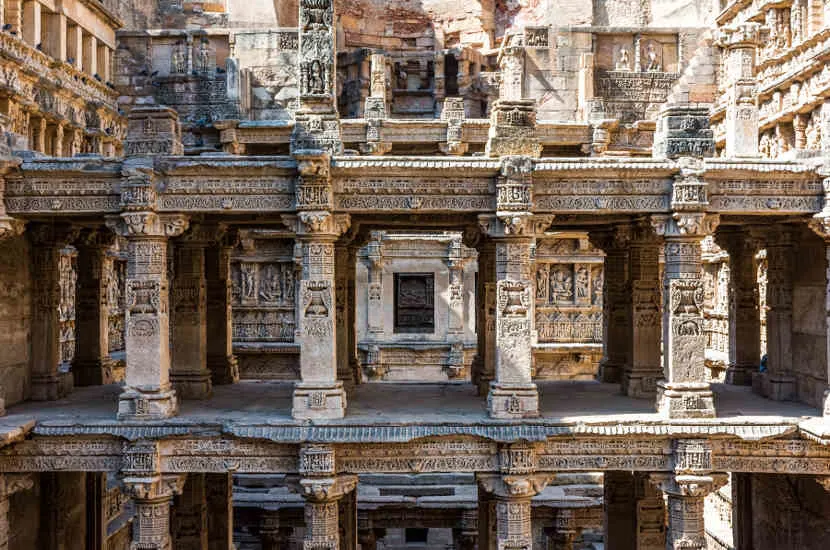
Rani Ki Vav is one of the popular UNESCO Heritage sites in India.
LOCATION: Patan, Gujarat
GETTING THERE: Ahmedabad, Gujarat’s capital, is the closest major hub to Patan. Gujarat is well connected by train from other major cities such as Delhi, Jaipur, and Mumbai. To get to Patan itself, it’s best to hire a car; local transport can be sporadic.
WHERE TO STAY: Ahmedabad (itself a UNESCO World Heritage city) is the best base to visit Rani Ki Vav and other monuments in Gujarat. Ahmedabad has a wide range of accommodation, from the lovely restored heritage hotel The House of MG to the budget In & Out Dormitory.
Rani Ki Vav is probably the most impressive and best-preserved stepwell in all of India… and that’s saying something! Elaborately decorated with a myriad of intricate patterns and religious reliefs, it is incredibly well preserved due to being completely buried by sand for centuries.
Rani Ki Vav—and Gujarat as a whole—is often skipped in favour of its more famous neighbour state, Rajasthan. This makes visiting Rani Ki Vav even more satisfying, as you don’t have to battle hordes of other tourists to marvel at the intricacies of the carvings or ogle the symbolic reliefs on display in every corner of the step well.
Rani Ki Vav was also named “Cleanest Iconic Place” in India in 2016—important given India’s track record with trash—showing how few tourists come here and how well organized the site is.
The patterns found all over Rani Ki Vav also serve as inspiration for the patterns of Patan Patola, a weaving technique only known to two families in Patan, producing some of the most gorgeous and intricate saris in India.
The step well dates from the 11th century but was buried in sand for centuries and wasn’t rediscovered until the 1980s. It was added to the UNESCO World Heritage list in 2014.
By Alex from Lost With Purpose
2. Jantar Mantar
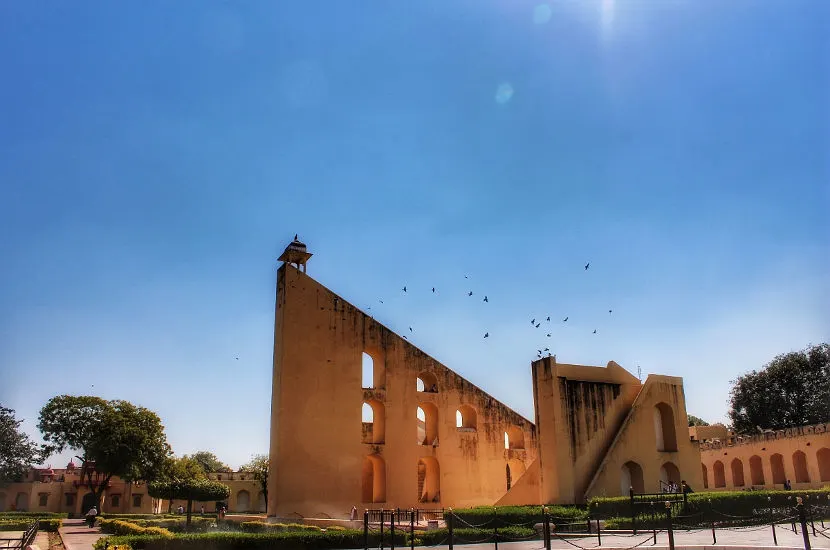
Jantar Mantar is another one of the popular UNESCO Heritage sites in India.
LOCATION: Jaipur, Rajasthan
GETTING THERE: Jaipur, being the capital of Rajasthan and the major city of India, is well-connected by air, road, and rail to almost every part of India. Usually, people fly into Delhi and drive down to Jaipur. The Pink city is 270 km from Delhi.
Jantar Mantar is at a distance of 12.9 km (around 35 minutes) from Jaipur International Airport, 4.7 km (around 15-20 minutes) from Jaipur Railway station and 6.2 km (around 20 to 25 minutes) from Jaipur Bus Terminal.
WHERE TO STAY: As one would expect from a capital city, Jaipur has innumerable accommodation options to fit every kind of traveller and every kind of budget.
Thousands of tourists from all across the world come to Jaipur every year and accommodation options get booked pretty fast so, it’s wise to book well in advance.
We stayed at Hotel Pearl Palace and loved it for its great ambiance and artistically decorated rooms. Visit their Peacock Rooftop Restaurant which serves scrumptious laal maas (red meat curry).
Jantar Mantar is an astronomical observation site built by Maharaja Sawai Jai Singh II in 1728. Jai Singh loved astronomy more than any other thing in the world. He built five such observatories all across India. Jantar Mantar in Jaipur is the best preserved and the largest of all.
The other four are located in Ujjain, New Delhi, Mathura, and Varanasi. The one in Jaipur boasts the world’s largest stone sundial, Samrat Yantra. It was recognized as UNESCO World Heritage Site in 2010.
Jaipur’s Jantar Mantar has around nineteen gigantic architectural astronomical instruments. They are used to measure the positions and distances of heavenly bodies. A visit to this astronomical wonder is must if you are visiting Jaipur with kids.
I’d recommend hiring a local guide for a complete learning experience. Jantar Mantar is open all days of the week from 9 am to 4:30 pm.
By Anjali from Travel Melodies
3. Kumbhalgarh Fort
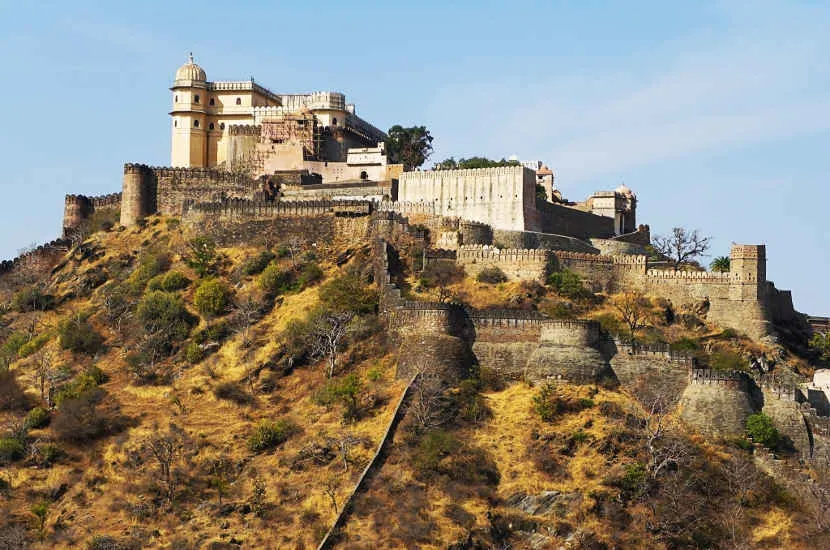
James says that Kumbhalgarh is one of the UNESCO heritages sites in India that you should visit.
LOCATION: Rajasthan
GETTING THERE: I hired a private driver through our hotel in Jodhpur to drive us to Udaipur via Ranakpur Jain temple (4 hours) and Kumbhalgarh (another 2 hours).
It’s a lovely drive through countryside dotted with Persian water wheels. It’s another couple of hours to get to Udaipur. Of course, you can go directly from Udaipur, and there are regular buses that do this trip. The nearest airport is in Udaipur, about 100 km away.
WHERE TO STAY: There are many hotels in the hills around the fort. Kumbhalgarh Forest Retreat is a cute and reasonably priced option with nice rooms and a small pool.
For something more upmarket, Kumbha Bagh is a luxury resort on a nearby hilltop, with a pool and just 32 rooms. Mahua Bagh is another very nice resort on a hilltop near the fort, with a pool and an outdoor restaurant.
Kumbhalgarh, built in the 15th century, is spectacular. In addition to the main building, complete with crenelated towers, there are beautiful temples, a modern village just inside the main gate, and enormous walls wide enough for eight horses walking beside each other snaking for 36 kilometers over the surrounding hills.
Walk up a seemingly endless series of switchbacks to the main palace building, where you can walk around, in and out of rooms and up to the top of the towers for incredible views over the surrounding countryside.
The most picturesque of the temples in the fort area is the Badal Mahal (Palace of the Clouds). You really get a sense of the history of this place by walking around the palace, the walls and the surrounding area.
There is also a recommended Sound and Light show each evening at 6:45pm that makes it worthwhile staying overnight for. (I missed this but have spoken with several travelers who went to it and they all raved about it.)
Kumbhalgarh is a little out of the way of the main tourist trail but is well worth the effort to get to.
James from Travel Collecting
4. Jaisalmer Fort
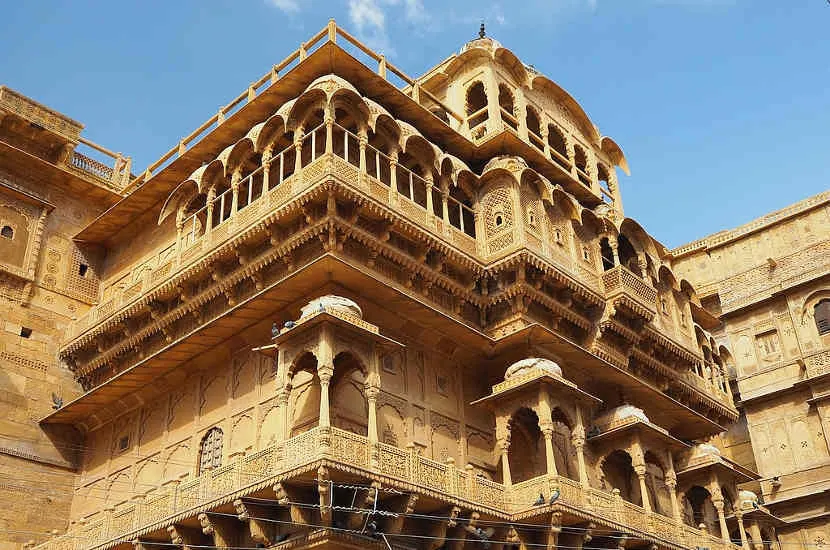
Jaisalmer is one of the most gorgeous UNESCO heritage sites in India.
LOCATION: Rajasthan
GETTING THERE: Jaisalmer is well connected by train to other major Indian cities. Direct trains are available from both Delhi and Jodphur. It is also possible to arrive by bus, or by cab.
WHERE TO STAY: Hotel Victoria
Jaisalmer Fort, also known as the yellow city, was built in 1156AD. It is thought to be one of the last living forts in the world. Unlike many forts in India it is free to enter and explore at your own pace. We loved wandering the alleys, browsing some of the many small stores and watching everyday life inside the fort.
Our kids enjoyed playing cricket with the locals in the cobbled streets and admiring the many animals we passed along the way. The relaxed vibe and freedom to wander made Jaisalmer Fort one of our favourite places to visit with kids in India.
The architecture within the fort is just as impressive as the fort walls. There are a number of temples, palaces and havelis worth exploring. We paid to visit the Jaisalmer Palace and while it is a lovely building it gets very busy.
More impressive are the ornately decorated havelis, such as Patwa Haveli, the sandstone Jain Temples and Bada Bagh just outside the city walls. Once you have had enough sightseeing we highly recommend finding a rooftop café or restaurant on the city walls to sit and admire the views across the city.
At sunset and sunrise, the fort is particularly impressive to view from outside the fort walls when it projects its renowned golden glow.
By Rachel from Adventure And Sunshine
5. Agra Fort
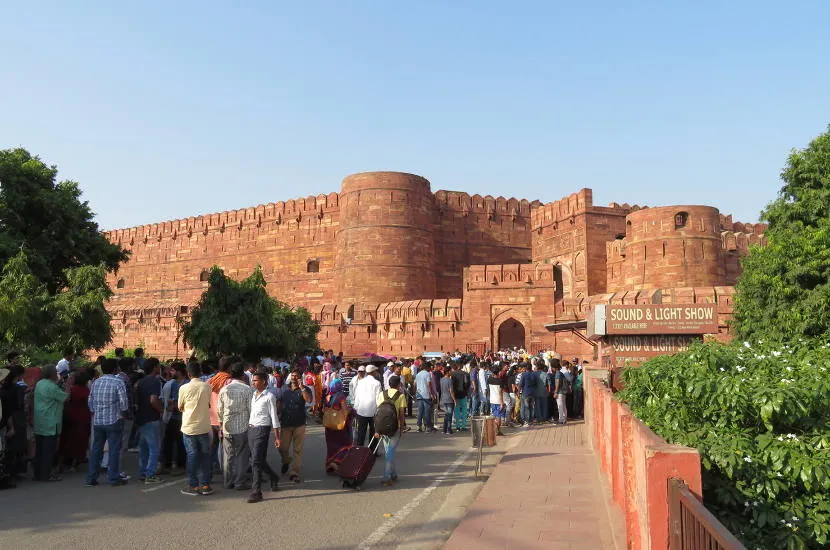
Agra Fort is another one of the gorgeous UNESCO Heritage sites in India.
LOCATION: Agra, India.
GETTING THERE: You can get to Agra from Delhi or Jaipur
WHERE TO STAY: There is a large variety of places to stay in Agra that would suit any budget, we stayed at the Radisson Hotel Agra.
Agra Fort is an UNESCO World Heritage site dating back to 1600’s and used by the Emperors of the Mughal Dynasty. Agra Fort is located 2.5kms from the famous Taj Mahal. Shah Jahan built the Taj Mahal as a mausoleum for his favourite wife Mumtaz Mahal.
Shah Jahan was overthrown by his youngest son, Aurangzeb. Aurangzeb imprisoned his father in Agra Fort for 8 years in a palatial room that provided a direct view of the Taj Mahal. You are able to view the room and balcony where Shah Jahan was imprisoned.
Emperor Shah Jahan made a number of changes to the original fort, his additions are easily recognisable as he favoured white marble. You will notice the original parts of Agra Fort are made from red sandstone including the Fort walls and particularly around the original areas which were originally for public use.
The newer white marble part of the fort is located to the near of the fort and much of it has precious stone inlay very similar to the Taj Mahal itself. There is a small fee for entering the Agra Fort and it is well worth purchasing even if only for the views of the Taj Mahal.
By Sally Lucas from Our3kidsvtheworld
6. Humayon’s Tomb
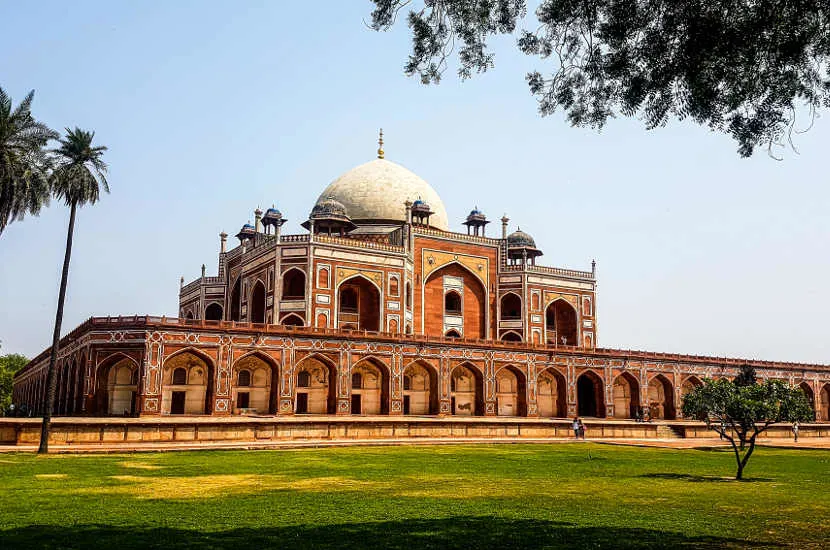
Looking for UNESCO heritage sites in India? You should consider visiting Humayon’s Tomb.
LOCATION: Delhi
GETTING THERE: The easiest way to get there is to take the metro, as it is fast and reliable. The nearest metro station is Jawaharlal Nehru, and from there you have another 2km to the site. If you don’t want to walk, then grab a taxi or a tuk-tuk.
WHERE TO STAY: Bloomrooms @ Link Road
India is filled with incredible sites. You can probably travel for years there and still have some left. And most people start their Indian journey from Delhi, the capital. As such, you should make sure not to ignore the sites found in the capital before heading forward.
One of the best places and a must-see in Delhi is Humayun’s Tomb. It’s an impressive complex which will introduce you in the remarkable world of Mughal architecture.
It is believed to have been built between 1565 and 1572, and it is also the first large-scale building constructed with red sandstone. Humayun was a Mughal Emperor, and his wife, Empress Bega Begum, commissioned the construction of the tomb.
It is just another example of the grand work found in the Mughal world. The Empress wanted to honour her husband by building the most beautiful mausoleum, and when you admire it, you will have to admit that she did a great job.
If you spend one day walking around the complex at Humayun’s Tomb and then move to Taj Mahal, you will be impressed with the skills and the architectural views of the period.
The complex is not only about Humayun’s Tomb. Leading to the mausoleum, you will pass lush gardens and other smaller mausoleums belonging to other Mughal emperors. It was the first garden-tomb found on the Indian subcontinent.
You can easily spend a couple of hours walking around the gardens and admiring the buildings, especially the intricate details on the main piece, Humayun’s Tomb
By Andra from Our World To Wander
7. Taj Mahal
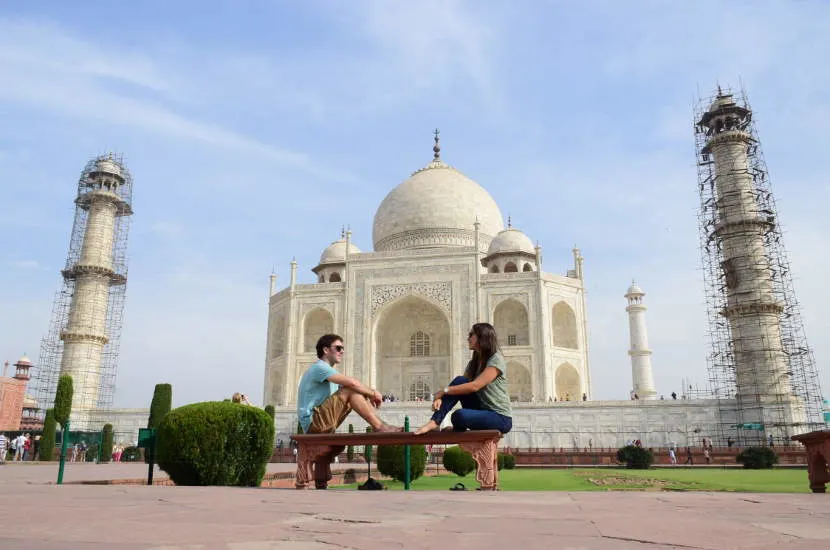
The Taj Mahal is one of the most well known UNESCO heritage sites in India.
LOCATION: Taj Mahal, Agra
GETTING THERE: To get here you must get to Agra. The easiest way to do it is by train from almost anywhere in the country. Or you can take a plane to Delhi and then travel to Agra.
WHERE TO STAY: One of the best choices is the Radisson Blu near the East Gate of the Taj Mahal.
The Taj Mahal is much more than only one of the UNESCO Heritage Sites in India, it is also one of the 7 Wonders of the Modern World. We all have heard about it, but very few know the history behind.
The Taj Mahal is one of the largest and most beautiful tombs built in the history of mankind and not a great temple as some people think. This translates into hundreds of years. It was built between 1631 and 1654 by the emperor of the time after his favorite wife died.
The mausoleum of the Taj Mahal is a work of perfect symmetry, millions of details and engravings in each of its corners. Looking at it is impressive. Just in the middle, the Emperor’s wife is buried, and years later he was also buried next to her, breaking the symmetry.
You cannot stop visiting its interior, for which you must make a long line, but the wait is completely worth it. Although today marvels anyone who visits it, the truth is that the history behind it is as romantic as it is sad.
The emperor lived his last days’ prisoner in the Red Fort of Agra but, through his window, he could always look at the Taj Mahal and feel close of his beloved wife, until the day of his death.
By Alejandra from Universo Viajero
8. Sanchi
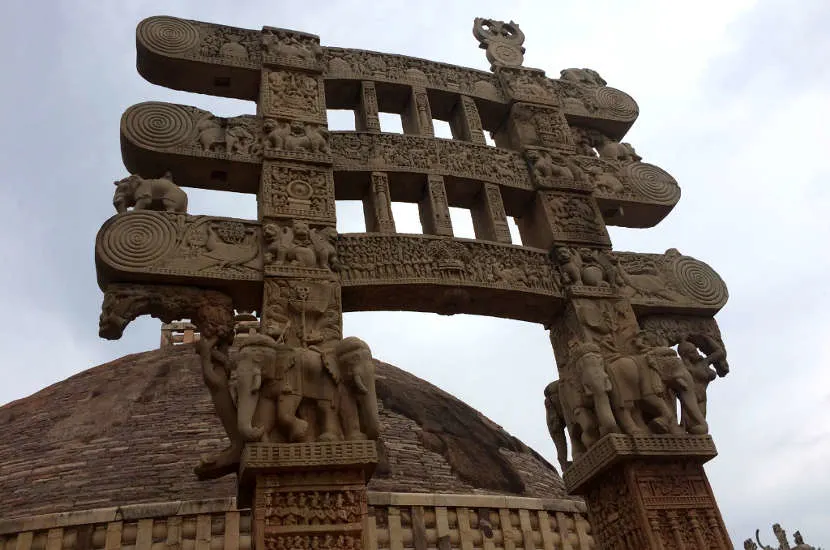
Sanchi is another one of the gorgeous UNESCO Heritage sites in India.
LOCATION: Madhya Pradesh
GETTING TO SANCHI: The closest major city to Sanchi is Bhopal. You can fly to Bhopal or get a bus or take a train. You can take a bus or bus from Bhopal to Sanchi very easily.
WHERE TO STAY: There’s no need to stay in Sanchi (and few options), you can stay in nearby Bhopal (we recommend the Adarsh Palace Hotel). There is a left luggage at Sanchi Railway Station (which is tiny and your bags are safe, but padlock them to be sure).
The Sanchi Buddhism stupas are one of the most peaceful places that we visited in India. It is a collection of Buddhist monuments that date back to the 1st and 2nd centuries BC. This is the oldest Buddhist sanctuary in existence and was a major Buddhist Centre in India until the 12th century.
The grounds here are immaculate, the stupas preserved superbly. This unique Buddhist site in India is quiet, reverent and peaceful. Sanchi has the most perfect and well-preserved stupas anywhere in India.
The Buddha didn’t visit here. Nothing happened in his life here. The foundation of Sanchi as an important centre of Buddhism was probably laid by Asoka when he built a stupa and laid a pillar here. The whole site was forgotten until 1818 when it was rediscovered by a General Taylor.
After that various attempts were made to discover more about the stupa which led to their collapse and decline because of the methods used. In 1912 they were taken over by the Director General of Archaeology of India and restored to their current state.
Sanchi stupas are stunning, well maintained and a haven of peace in Madhya Pradesh that deserves your time. There is a museum here but its closed-on Fridays.
By Sarah from A Social Nomad
9. Valley Of Flowers
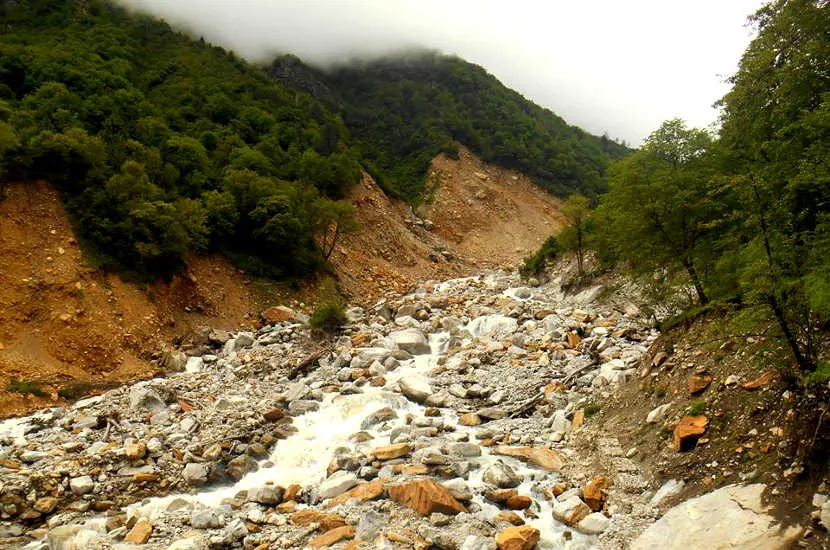
One of the natural UNESCO heritage sites in India is the valley of flowers.
LOCATION: Uttarakhand
GETTING THERE: It is easy to reach Govindghat from the capital of India, New Delhi. One can reach Haridwar by train by covering a distance of 5 hrs thereafter hiring a taxi till Govindghat which takes around 10 hours to reach the destination.
WHERE TO STAY: There is a provision of stay for travelers at Ghangaria from where the site is located at a distance of only 5 kms.
The Valley of Flowers is a recent addition to the UNESCO World Heritage sites in India. The site is located in Garhwal Himalayas at a distance of 25 kms from a place known as Govindghat.
Ghangaria acts as the center point for some important destinations in the Garhwal Himalayas like Valley of Flowers and the Hemkund Sahib Gurudwara for which millions come to pay a tribute from around the world.
The valley is Uttarakhand and is the home to millions of flowers not found anywhere in the country. One can spend the night at Govindghat and start trekking the next day to this valley.
It is home to millions of wild species of flowers and indigenous plants which is the reason why it is now a UNESCO Heritage site. One cannot stay in the valley, so you have to turn back for the night.
By Somnath from Travel Crusade
10. Western Ghats
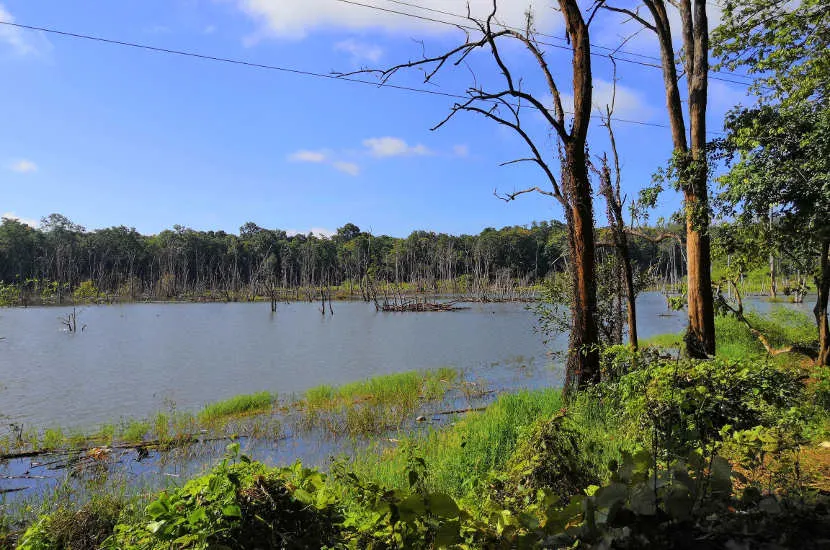
The Western Ghats is another one of the natural UNESCO heritage sites in India worth visiting.
LOCATION: The Western Ghats extend from the Dang region in Maharashtra to Kanyakumari (the southern tip) in Tamil Nadu. 39 sites dotted across the Ghats, mostly concentrated in Karnataka, Kerala and Tamil Nadu were collectively recognized as a UNESCO World Heritage site in 2012.
GETTING THERE: You can drive or take one of the frequent buses from any of the major metropolitan cities located in the region. These cities are Pune, Bengaluru, Chennai and Trivandram, each of which are close to some of the 39 recognized sites.
PLACES TO STAY: Homestays, resorts and hotels of all price-range around the region, which, over time has developed into a bustling tourist spot. Fort Munnar resort has been my favorite in terms of budget-friendly 3-star accommodation, so far in my countless escapes to the Ghats.
With over 300 endangered species in an area spread across nearly 8000 square kilometres, the Western Ghats are recognized as one of the eight best ecological hot-spots in the planet for bio-diversity. It is also the oldest mountain range of India.
The lush green mountains with scenic tea plantations, dense rain-forests that are home to the world’s largest population of tigers, sparkling lakes and breath-taking waterfalls make the Western Ghats a paradise for nature-lovers.
The world heritage community recognized the landscape as a unique example of monsoon eco-system on earth. The hills of Western Ghats play a crucial role in monsoon cycle of the country and is known for pleasant weather throughout the year.
It’s hard to choose among the numerous gems, but Munnar, Kodaikanal, Shimoga and Coorg are my favourite places to explore in the Western Ghats of India.
By Sinjana from Backpack & Explore
11. Chhatrapati Shivaji Terminus
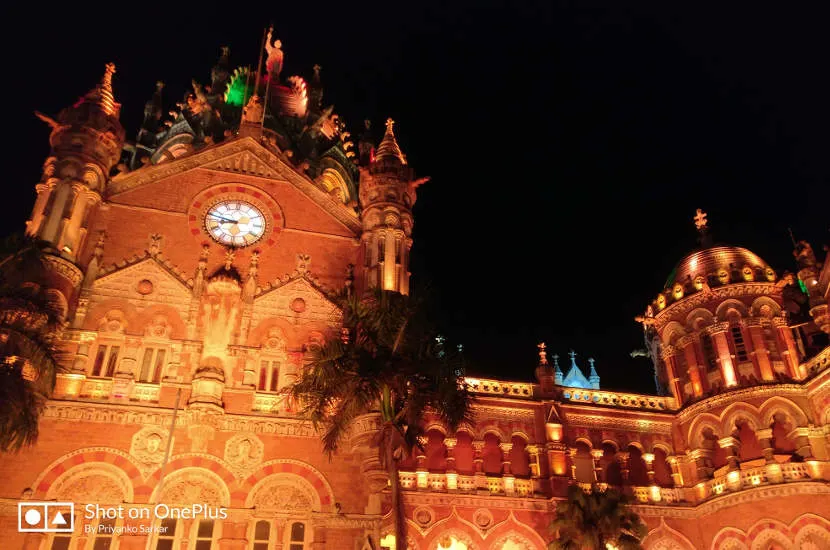
I never even realised that CST Railway station was one of the UNESCO Heritage sites in India.
LOCATION: Mumbai, Maharashtra
GETTING THERE: Mumbai is well connected to all parts of India by train and the world by flight.
WHERE TO STAY: Taj Mahal Palace Hotel, Oberoi Mumbai, Trident Mumbai or Marine Plaza
The Chhatrapati Shivaji Terminus Railway Station can make even the hardiest of people sit up and take notice of its grand outer façade. Formerly (and fondly) known as Victoria Terminus, this magnificent building was built in 1887 to celebrate Queen Victoria’s golden jubilee.
The first train in India ran from here to Thane and the building still serves as the headquarters of the Central Railways. The station has a total of 18 platforms from where suburban and long-distance trains go to all corners of the country, making it one of the busiest stations in the world.
Built in Victorian Gothic style architecture and spread over 2.85 hectares, the building’s many gargoyles and animal motifs make for a great game of spotting. There are regular tours during weekdays where a certified guide can take you around the lesser-accessed areas of the station if you’re inclined to learn more.
With so much to go for it, the station became a UNESCO World Heritage site in 2004. At night, the entire structure is lit up in colours from outside making the building even more beautiful to look at. Indeed, the station is the second-most photographed building in all in India, next only to the Taj Mahal in Agra.
By Priyanko from Constant Traveller
12. Nilgiri Mountain Railway
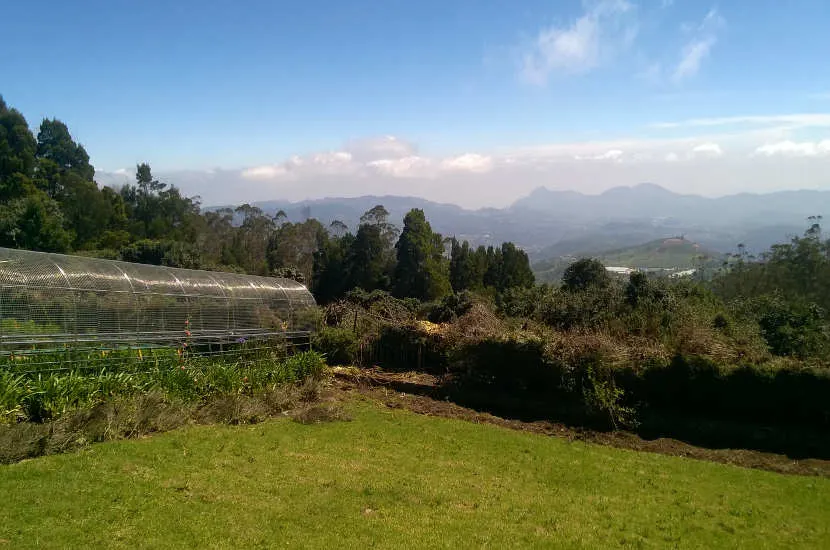
The Nigiri Mountain railway is one of the UNESCO Heritage sites in India.
LOCATION: Tamil Nadu
GETTING THERE: Mettupalayam is where the train starts, and it is just 32 kms from Coimbatore and can be reached by taxi. Coimbatore has an international airport.
WHERE TO STAY: Taj Savoy Hotel
Ooty aka Udagamandalam, located in Tamil Nadu, is known as the Queen of Hills in India for good reason. It is a popular summer getaway for tourists and especially loved by honeymooners in all seasons. Nilgiri Mountain Railway, locally called as the “Toy Train” is a highlight among the things to do when you visit this hill station.
Hop on this leisurely 5-hour train journey from Mettupalayam to Ooty or vice versa to enjoy a blast of nature and feel refreshed from head to toe. You would be surrounded with incredible greenery as you pass through a whopping 16 tunnels, 100 plus curves and more than 200 bridges in the 45 Kms you travel!
I am a nature lover, and I would suggest that the best time to ride this toy train with beautiful wooden carriages would be just after monsoon from September to January if you want to savour the best show Mother Earth puts on for us. This is also my favourite season to enjoy plenty of the famous Ooty tea here. Advance reservation is recommended as the train tickets sell out fast.
Nilgiri Mountain Railway was built in the early 20th century when India was still under British rule and is currently run by Southern Railway.
It is like the popular Darjeeling Himalayan Toy Train in North India, which is also a UNESCO World Heritage Site, but is unique in its own way. Nilgiri Mountain Railway uses Swiss made X-class steam locomotives.
For the major part of the journey from Mettupalayam to Ooty, only steam engine is used. For the last leg of the train journey between Coonoor and Ooty, it is switched to a diesel engine.
By Priyadarshani from Glorious Sunrise
13. Pattadakal
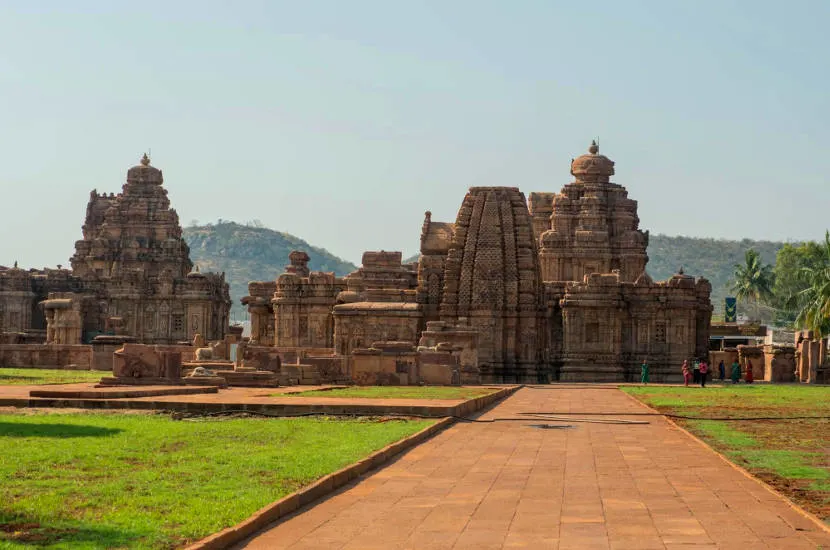
Pattadakal temples are one of the gorgeous UNESCO Heritage sites in India.
LOCATION: Karnataka
GETTING THERE: Pattadakal’s closest airport is in Belgaum which lies 190km away and takes 4h to reach. Alternatively, the fastest way to get there is via the railway system. The closest station is in Badami which is just 6km away.
WHERE TO STAY: There are no accommodation options near the temple. The best option is to stay somewhere in Badami where you can find some 2 and 3 star hotels
Pattadakal was built between the 8th century and 12th century and is part of a UNESCO listed group of temples which includes Aihol and the Badami Cave temples on the banks of the Malaprabha River.
The temples are considered an inspiration for the rest of the constructions in India at the time and are made with red stone giving them this stunning colour against the carpet of green grass. Some of the temples in the complex are Hindu, some Buddhist and there is even a Jain temple. And some of them are still in use today.
By Mar from Once In A Lifetime Journey
14. Elephanta Caves
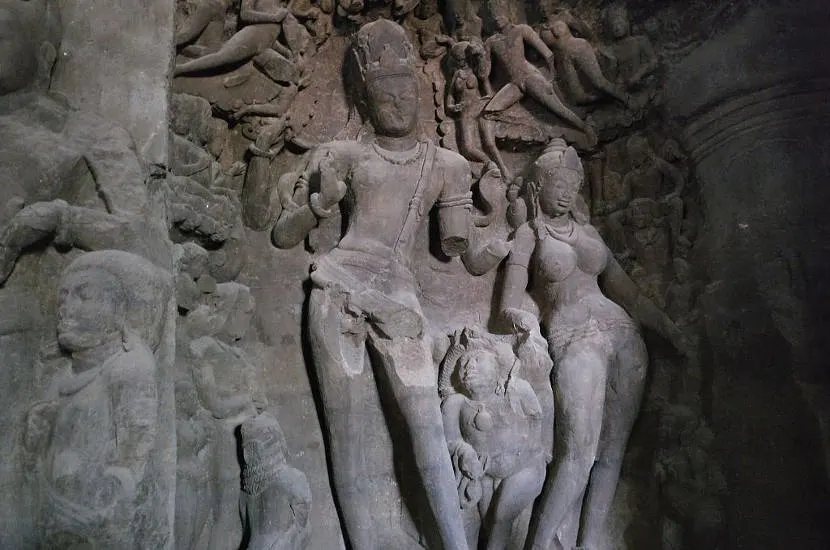
Elephanta caves are one of the popular UNESCO heritage sites in India.
LOCATION: Elephanta island, Maharashtra
GETTING THERE: Boats leave frequently from Gateway of India. Buy your tickets at the small building to the right of the security entrance, then go to the dock beyond the Gateway. It’s definitely worth paying the extra 10 rupees to ride on the top deck.
The trip takes about an hour. On arrival, you can take a toy train down the long pier to the island, or else walk. Then you’ll take a long stairway lined with hawker stalls up to the top of the hill where the UNESCO site’s entrance is.
WHERE TO STAY: Stay in Mumbai. Except for the caves and hawker stalls, there are no tourist facilities on the island.
Elephanta Caves is worth visiting for two reasons: as a UNESCO site, and as an escape from the city. The caves were carved from the basalt of the hill back in the 5th-7th centuries AD, and were used as Hindu temples, mostly dedicated to Shiva.
Originally richly carved inside, the caves have been badly damaged over the centuries. However, Cave #1, hewn 39 meters deep into the hill, still gives visitors an inkling of its former glory.
Doorways are guarded by tall statues, and several different panels on the back and side walls contain impressive and ornate, if damaged, bas-reliefs depicting legends or incarnations of Shiva.
The most spectacular is on the back wall, a three-faced Shiva, six meters tall. In comparison, the other caves are rather disappointing, so damaged that little remains. However, it’s worth a stroll along the row of caves just for the peaceful atmosphere. It’s quiet, it’s calm, and it’s a delightful escape from the noise and constant motion of Mumbai.
By Rachel from Rachel Ruminations
15. Fontainhas
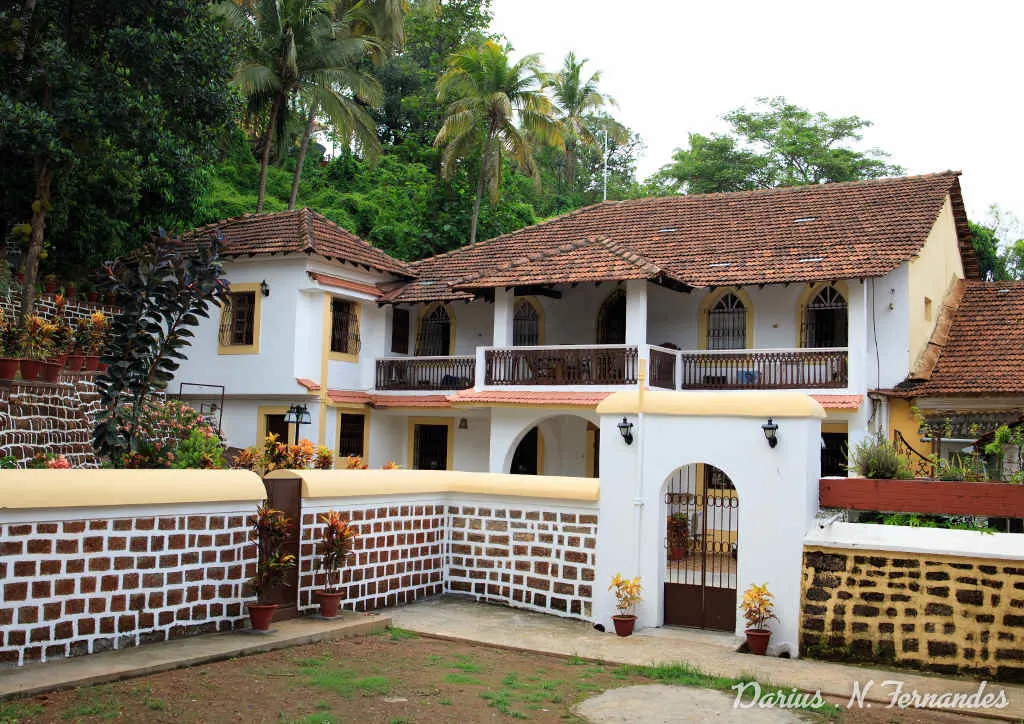
Fontainhas in Goa is one of the most interesting and vibrant UNESCO Heritage sites in India.
Location: Fontainhas, Goa
Getting There: Fontainhas is easily accessible from Panjim city bus stand.
Where To Stay: WelcomHeritage Panjim Inn
Fontainhas is one of the most easily accessible UNESCO sites in India. It lies within the capital city of Goa aka Panjim. Fontainhas is also known as the Latin Quarters of Panjim because it has these lovely colorful streets that are perfect backdrops for clicking photographs.
Yes! I’m not kidding. It is one of the most instagrammable spots in Goa so make sure you pair your pics with some epic captions about the state.
Fontainhas is one of the oldest parts of the city. The Portuguese architecture is pretty iconic. What is more, you will find that the houses here are very well maintained. Which brings me to an important point. Please be considerate. People live in the area so try not to be loud or damage their property.
Churches Of Old Goa
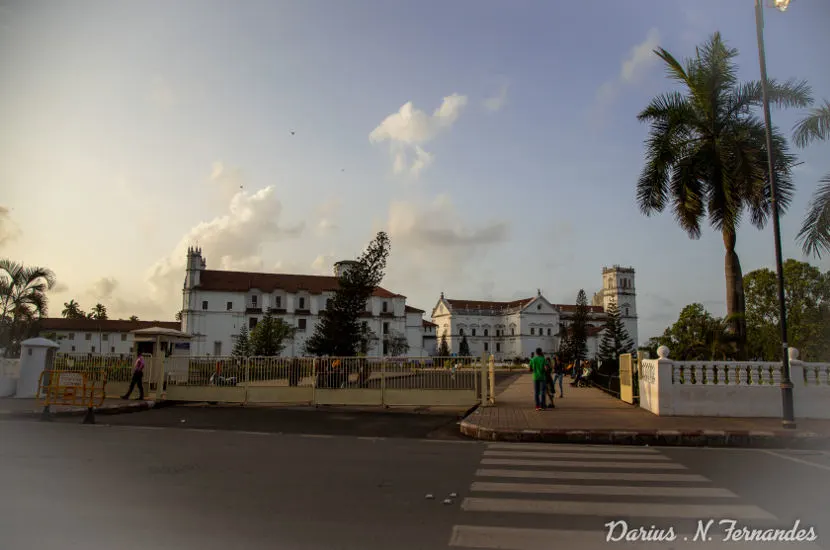
The Churches of Old Goa are one of the UNESCO Heritage sites in India that is still in use!
Location: Old Goa, Goa
Getting There: You would need to take a bus from Panjim or Margao. People usually just choose to drive from place to place.
Where To Stay: WelcomHeritage Panjim Inn
The Churches of Old Goa is probably my top pick when it comes to the UNESCO Heritage sites in India. I have visited the churches almost once every year since the time I was born. Honestly, so have most Goans.
The churches are all clustered together. Some of the noteworthy sites include the Basilica de Bom Jesus, the Se Cathedral and St Augustine’s Tower among others. There is a lot of history tied to these ancient monuments.
Interestingly enough, despite the age of these structures, you will find that most of them are still used for religious services. So make sure that you observe proper etiquette and dress accordingly.
There are so many gorgeous UNESCO heritage sites in India and I haven’t yet been able to cover them all. I expect that our list is going to grow much larger eventually and I will probably add a part 2 to it. It seems like an interesting project for me to work on.
Have you been to any UNESCO Heritage sites in India? Which ones did you fall in love with? Let us know in the comments below.

*This post contains Affiliate links
** The photographs in this post are not the property of Globetrove and have been provided by the authors in each section.

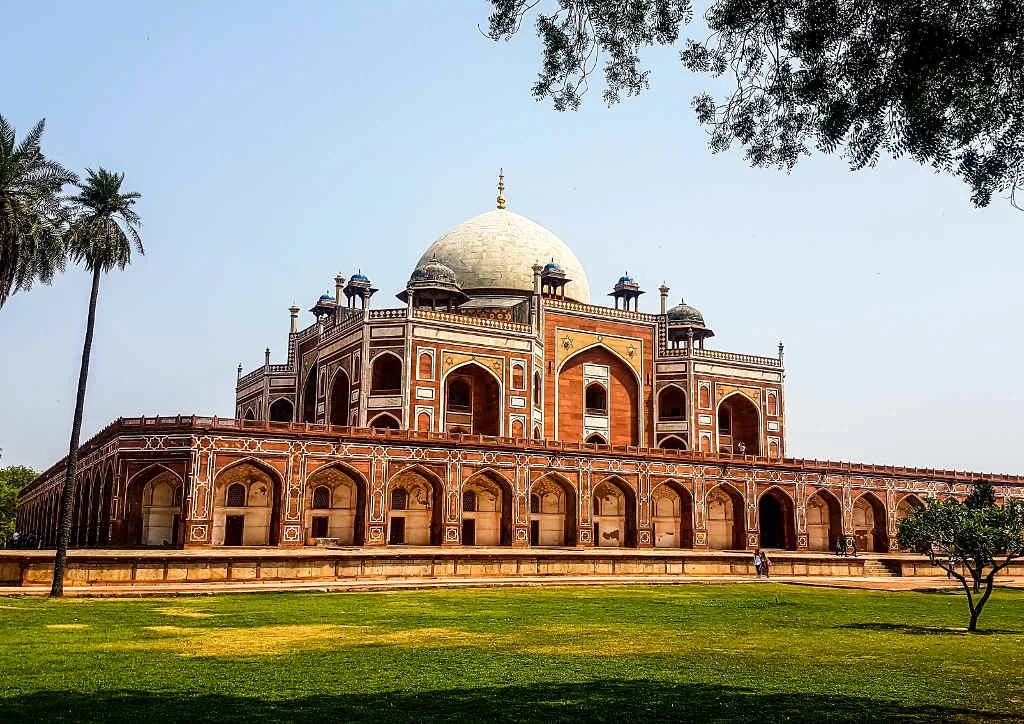
Nisha
Friday 4th of December 2020
Oh! I have been to many more! Didn't know you were doing a collab, else would have participated too. :)
For me, the best was Valley of flowers as I'm an outdoor person who loves hiking too. :)
Rashmi K
Sunday 15th of November 2020
Nice post on UNESCO World Heritage sites. The walled city of Ahmedabad (Old Ahmedabad) can be a great addition to this if you ever expand this list in the future.
pankaj
Friday 31st of January 2020
This is such a great blog and images are really amazing. Thank you for sharing.
Mihir Ajgaonkar
Monday 22nd of April 2019
Wonderfully compiled list...great help to the travelers. I believe the cave frescoes at Ajanta and the rock carved Kailash temple at Ellora are also Unesco world heritage sites. They and are much more beautiful than some of the sites featured here.
Penny
Monday 22nd of April 2019
I've been meaning to visit them for a long while but sadly haven't had the chance. :(
Marysia @ My Travel Affairs
Saturday 27th of October 2018
I have only been to 4 of them, but planning to see them all :) Great post!